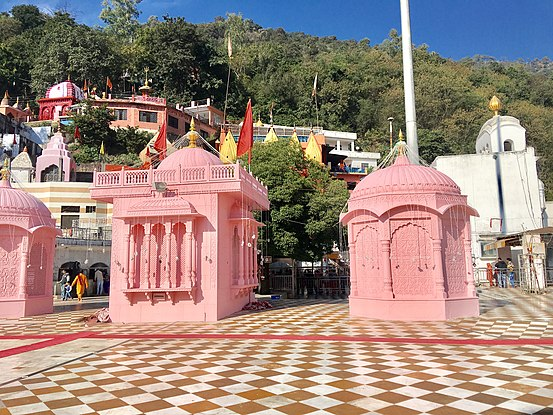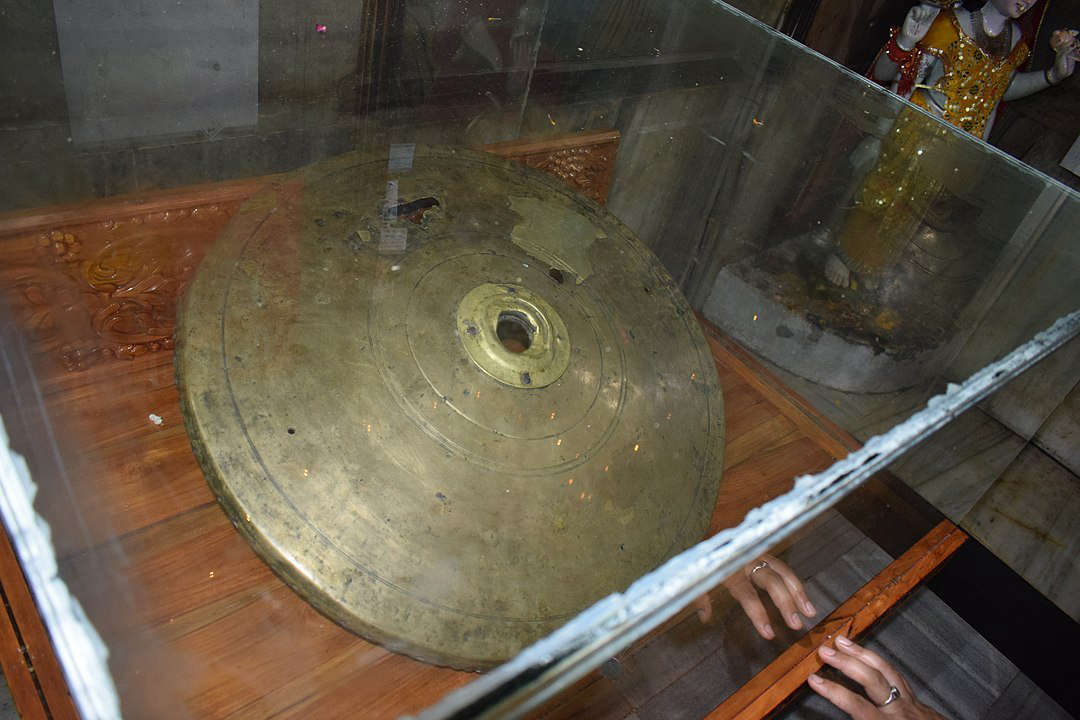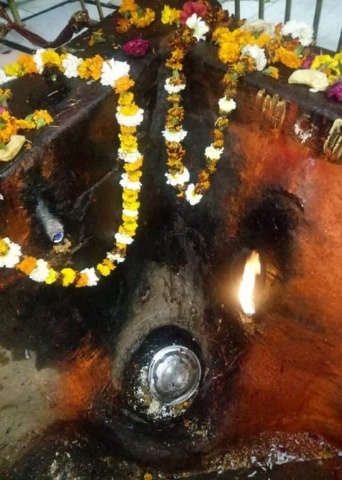
The most ancient temple besides Vaishno Devi is Jwalaji or Jwala Mukhi temple in Himachal. Jawalamukhi has been a pilgrimage centre for many years as It holds a great mystery and devotion for its visitors.
The temple is located in the lower Himalayas in Jawalamukhi town of the Kangra district of Himachal Pradesh state of India, about 56 kilometres from the larger town of Dharamsala, Himachal Pradesh. There is a natural cave where infinite flames continue to burn. Some say there are nine flames for the nine Durga Avatars. Numerous Buddhist societies share a symbolism of seven-forked flames in their folk sagas too.

Ancient tales speak of a time when demons lorded over the Himalaya mountains and oppressed the gods. Led by Lord Vishnu, the gods agreed on to destroy them. They focused their strengths and huge flames rose from the ground. From that fire, a young girl took birth. She is regarded as Adishakti-the first 'shakti', Known as Sati. After her tragic death, her body broke into pieces and at places where the pieces fell, the fifty-one sacred 'shaktipeeths' came into being. Sati’s tongue fell at Jawalaji and the goddess is manifest as tiny flames that burn pure blue through gaps in the aged rock. This is believed to be the first-ever temple built by the Pandavas, dedicated to the “Goddess of Light”.
In historic times, Mughal Emperor Akbar once tried to demolish the flames by covering them with an iron disk and even channelizing water to them. But the flames fired all these efforts. Akbar then presented a golden parasol at the temple. However, his cynicism at the energy of Devi caused the gold to degrade into another metal which is still unknown to the world. It is said that Even Aurangzeb, returned back to Delhi after knowing Maa Jwala Devi’s powers. During the 70s a foreign company was assigned by the Government of India to investigate the odds of this place. They worked for a few years but left saying they could not find anything.
 Golden Parasol presented By Emperor Akbar to Maa JwalaMukhi
Golden Parasol presented By Emperor Akbar to Maa JwalaMukhi
Image source: en.wikipedia.org
The most unique thing about this place is that, unlike any other temple, Jwala Ji temple doesn’t have a deity or an icon, but a constantly burning blue flame that seems to come from the rocks. The flame can be seen at various places in the temple and it is burning continuously since the first date of its known history. Despite many scientific research, the reason behind these natural flames couldn’t be found cut. The scientists say there is a sleeping volcano under Jwala Ji temple and the natural gas coming out of that volcano is burning as flames, which people worship as Goddess.

Natural Flame inside the Temple
Image Source: [https://jawalajitemple.com/gallery]
During March to April and September to October every year, colourful fairs are held during the Navaratra celebration. It is a hilly area with a beautiful scenic view all along the valley. Jwala Ji is easily accessible being located on a National Highway and is also accessible throughout the year as the weather is pleasant. Hence, the temple is convenient for people of all ages throughout the year. The nearest railhead is Jawalaji road Rental at a distance of 20 km from the temple. The shrine is well connected by road. Motorable roads connect this temple from Delhi, Chandigarh & Dharamshala. Taxis can be hired from these places. The nearest airport at Gaggal (dharmshala) in Himachal Pradesh is 50 km from Jwalaji Temple. And every year thousands of devotees visit Jwalaji Temple to take blessings and witness the miracle of this place. Till now no scientists or geologists says nothing since they only tried their level best to find a clue but, failed without any solid proofs. There is surely some other phenomena and science that is working behind Jwala Ji eternal flame but that can be an indication of the glory of our ancestors.
